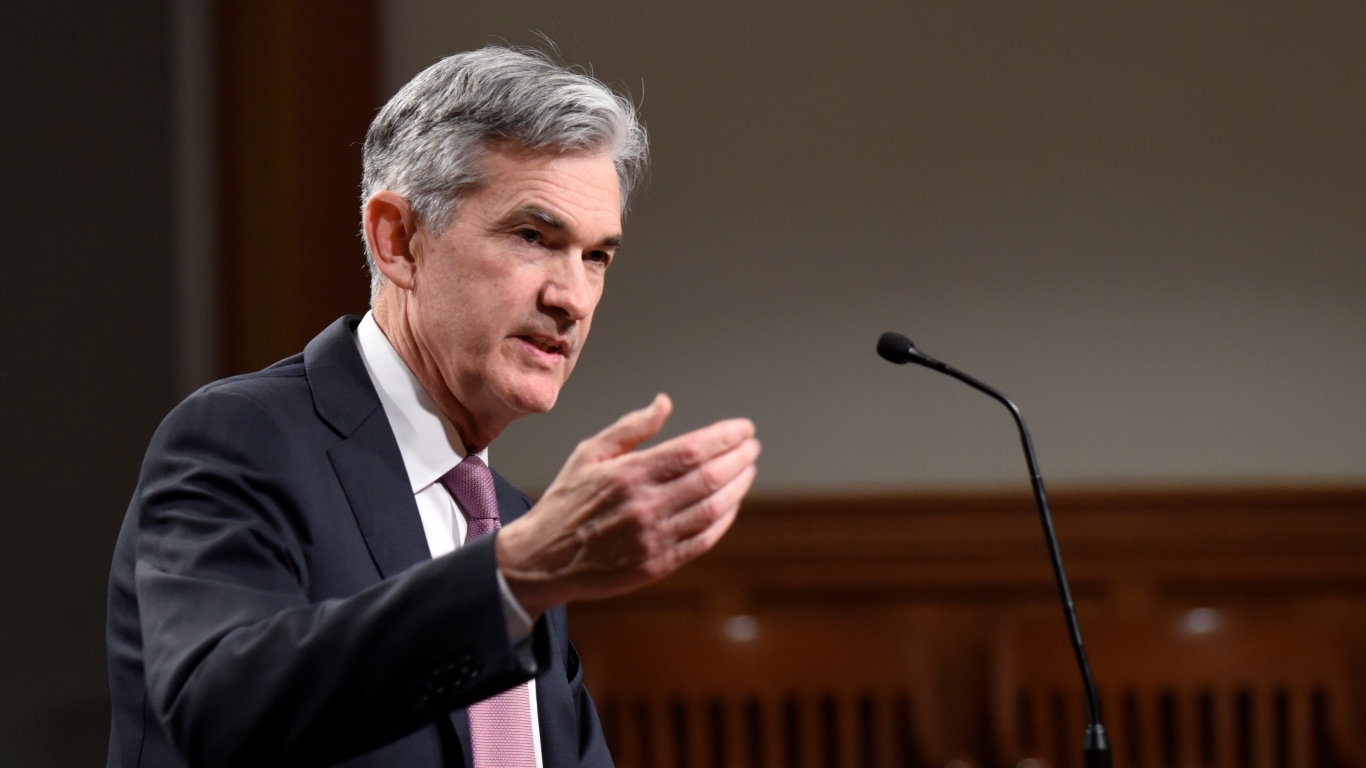Economy
Fed Chair Powell Evaluates Changes to Fed Policies and Toolkit

Published:
Last Updated:

With the markets on edge with trade wars, breaking up or heavily regulating companies, dealing with an inverted yield curve and dealing other nontraditional market risks, many eyes should be on commentary by Federal Reserve Chair Jerome Powell. He spoke at the Federal Reserve Bank of Chicago on Tuesday, June 4, 2019, at the Conference on Monetary Policy Strategy, Tools and Communications Practices.
The very first takeaway that the news headlines are likely to gravitate toward is that Powell said the Fed will act appropriately to sustain the expansion. The next issue, which was addressed in questions (see below), is whether the Federal Open Market Committee (FOMC) should bring changes or enhancements to its policies and the options in its toolkit to meet future challenges.
In dealing with recent developments involving trade negotiations and other matters, Powell said the Fed does not know how or when these issues will be resolved, is monitoring the developments closely and will “act as appropriate to sustain the expansion.” As always, full employment and a 2% inflation target remain the target.
Powell also sees parallels between the economic climate of 2019 and 1999. He said:
While central banks face a challenging environment today, those challenges are not entirely new. In fact, in 1999 the Federal Reserve System hosted a conference titled “Monetary Policy in a Low Inflation Environment.” Conference participants discussed new challenges that were emerging after the then-recent victory over the Great Inflation. They focused on many questions posed by low inflation and, in particular, on what unconventional tools a central bank might use to support the economy if interest rates fell to what we now call the effective lower bound (ELB). Even though the Bank of Japan was grappling with the ELB as the conference met, the issue seemed remote for the United States. The conference received little coverage in the financial press, but a Reuters wire service story titled “Fed Conference Timing on Inflation Odd, but Useful” emphasized the remoteness of the risk. Participants at the conference could not have anticipated that only 10 years later, the world would be engulfed in a deep financial crisis, with unemployment soaring and central banks around the world making extensive use of new strategies, tools, and ways to communicate.
The next time policy rates hit the ELB — and there will be a next time — it will not be a surprise. We are now well aware of the challenges the ELB presents, and we have the painful experience of the Global Financial Crisis and its aftermath to guide us. Our obligation to the public we serve is to take those measures now that will put us in the best position deal with our next encounter with the ELB. And with the economy growing, unemployment low, and inflation low and stable, this is the right time to engage the public broadly on these topics.
Powell further noted that the combination of lower real interest rates and low inflation translates into lower nominal rates and a much higher likelihood that rates will fall to the ELB in a downturn, and also said that extended ELB episodes can be associated with painfully high unemployment and slow growth or recession. Core inflation is currently running a bit below 2% on a trailing 12-month basis.
One current review is the evaluation of potential changes to the Fed’s strategy designed to strengthen the credibility of the symmetric 2% inflation objective. This is broken down by these three questions:
1) Can the Federal Reserve best meet its statutory objectives with its existing monetary policy strategy, or should it consider strategies that aim to reverse past misses of the inflation objective?
2) Are the existing monetary policy tools adequate to achieve and maintain maximum employment and price stability, or should the toolkit be expanded?
3) How can the FOMC’s communication of its policy framework and implementation be improved?
The FOMC site for speeches has the long answers to these three key questions.
On last look, the Dow Jones industrials were trading up about 350 points and the S&P 500 was up 33. The yield on the 10-year Treasury was 2.12% (versus 1.89% for the two-year, 2.14% for the one-year and 2.33% for the three-month) and the 30-year Treasury yield was at 2.58%.
Thank you for reading! Have some feedback for us?
Contact the 24/7 Wall St. editorial team.